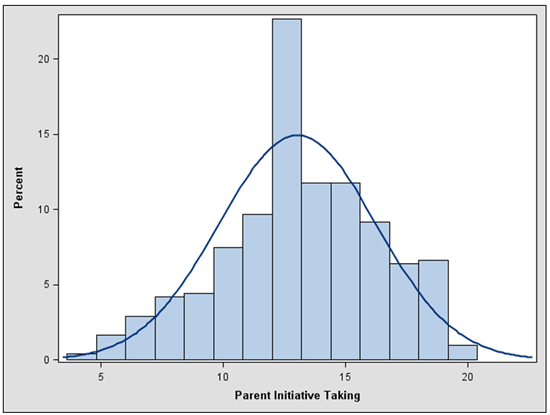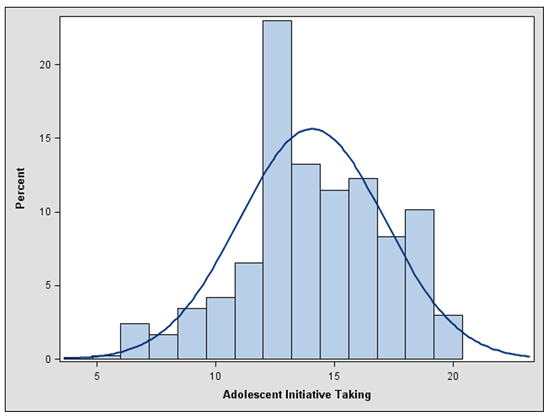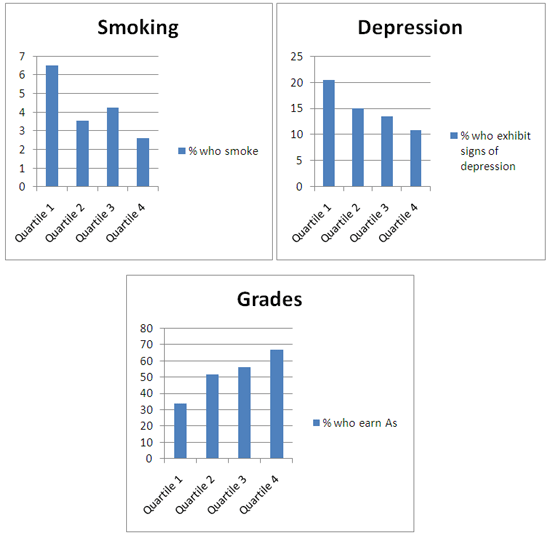Initiative Taking
Definition
The practice of initiating and manifesting an activity toward a specific goal by adopting the following characteristics:
-
Reasonable risk-taking and openness to new experiences
-
Drive for achievement
-
Innovativeness
-
Willingness to lead
Parent Scale
Please indicate how much these statements describe your child (Not at all like my child, A little like my child, Somewhat like my child, A lot like my child, Exactly like my child)
-
My child is willing to risk failure to reach his/her goals.
-
When my child works at something, he/she cares about doing his/her best.
-
My child likes coming up with new ways to solve problems.
-
My child is a leader, not a follower.
Parent Scale Psychometric Properties and Fit Indices
We conducted confirmatory factor analysis (CFA) to examine whether responses to the scale appeared to measure a single construct. Along with Cronbach’s alpha, we present model fit indices below.

-
Alpha=0.73 (good)
-
CFI=1.000 (excellent)
-
TLI=0.998 (excellent)
-
RMSEA=0.024 (excellent)
Adolescent Scale
Please indicate how much these statements describe you. (Not at all like me, A little like me, Somewhat like me, A lot like me, Exactly like me)
-
I am willing to risk failure to reach my goals.
-
When I work at something, I care about doing my best.
-
I like coming up with new ways to solve problems.
-
I am a leader, not a follower.
Adolescent Scale Psychometric Properties and Fit Indices

-
Alpha=0.70 (good)
-
CFI=0.982 (excellent)
-
TLI=0.975 (excellent)
-
RMSEA=0.064 (adequate)
Subgroup Model Fit
We tested the final adolescent and parent models with subgroups to examine whether the model fit for different subsets of respondents in the same manner as the overall sample. Using the same fit statistic requirements as the overall models, a check mark indicates that the model fit for the subgroup. Household income is defined as “low” if it is less than the median income in the sample. “High” household income indicates that the household income was equal to or greater than the sample’s median.

Concurrent Validity
Four single item measures were used to examine the concurrent validity of the adolescent scale: a measure of social behavior (fighting), a measure of health behavior (smoking), a measure of emotional health (adolescent-reported depressive symptoms), and a measure of cognitive development (grades).
Concurrent validity was examined in two ways: with bivariate and multivariate analyses. The table below presents the results of multivariate analyses, which control for: teen gender, teen age, teen race, household income, household size, parental education, parental marital status, parental home ownership, parental employment, and metropolitan area and region of residence. The beta coefficient of the relationship between the construct’s scale and outcome is presented.

The graphs below show the bivariate relationships between the adolescent scale and outcomes. Results are presented for relationships that were at least moderately significant (at the 0.10 level) in the multivariate analyses. Note that the y axis scales are different in each graph.

© Copyright 2024 ChildTrendsPrivacy Statement
Newsletter SignupLinkedInYouTube